Variation on the Final Act of La Juive, (18)86
Oil on canvas
32.5 x 46 cm
Signed and dated lower right.
Dedicated "à l’ami Carnot"
Provenance
Private collection, France
This painting, attributed to a 19th-century French school artist, illustrates a dramatic scene from the final act of the opera La Juive (1835) by Jacques Fromental Halévy, with a libretto by Eugène Scribe. The opera, which left a profound mark on its era, addresses themes of religious tolerance through the tragic story of Eléazar, a Jewish goldsmith, and his adopted daughter Rachel, both condemned to perish at the stake amid an atmosphere of hatred and fanaticism.
The composition of the painting is dominated by a striking chiaroscuro effect. The background features towering Gothic architecture, evoking a medieval city under the grip of religious repression, with a monumental cathedral silhouetted against the fading light of dusk. On the right, the stake burns fiercely, surrounded by a dense, agitated crowd whose tumult mirrors the horror of the scene. The use of dark tones, interspersed with glowing reds, heightens the oppressive and tragic atmosphere.
The dedication, "à l’ami Carnot," suggests the work may have been created to honor a patron or close acquaintance, possibly reflecting the political or social resonance of La Juive. Indeed, the opera’s plea against intolerance resonated strongly in 19th-century France, a period fraught with tensions between religious communities. The date of the painting (1886) might also hint at a revival of interest in La Juive, either through contemporary performances or public debates on civil rights.
Technically, the artist displays an expressive mastery of the medium, with brisk, dynamic brushstrokes that vividly convey violence and emotion. The handling of light, particularly the reflections on the water in the foreground, adds striking depth to the composition. The work situates itself within the tradition of historical and narrative painting, while embracing the aesthetics of late Romanticism.
In summary, this painting is more than a mere opera illustration; it is a visual meditation on the destructive power of intolerance and the weight of destiny, firmly rooted in the grand tradition of 19th-century Romantic drama.









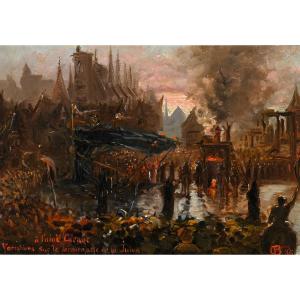








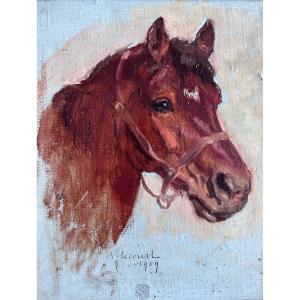

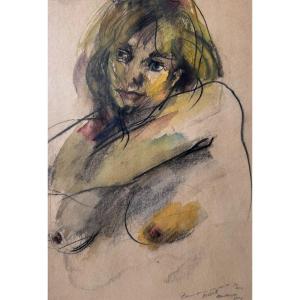










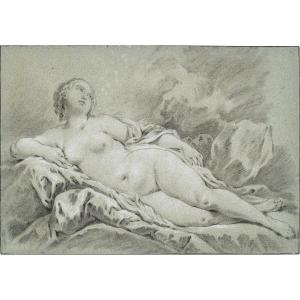

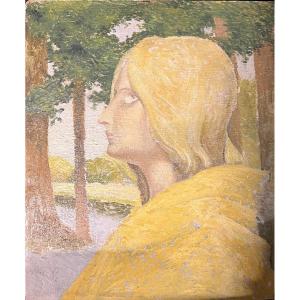
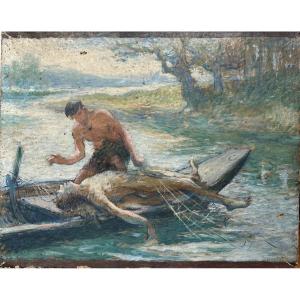

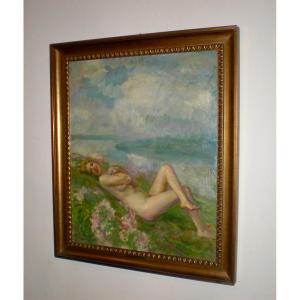



 Le Magazine de PROANTIC
Le Magazine de PROANTIC TRÉSORS Magazine
TRÉSORS Magazine Rivista Artiquariato
Rivista Artiquariato